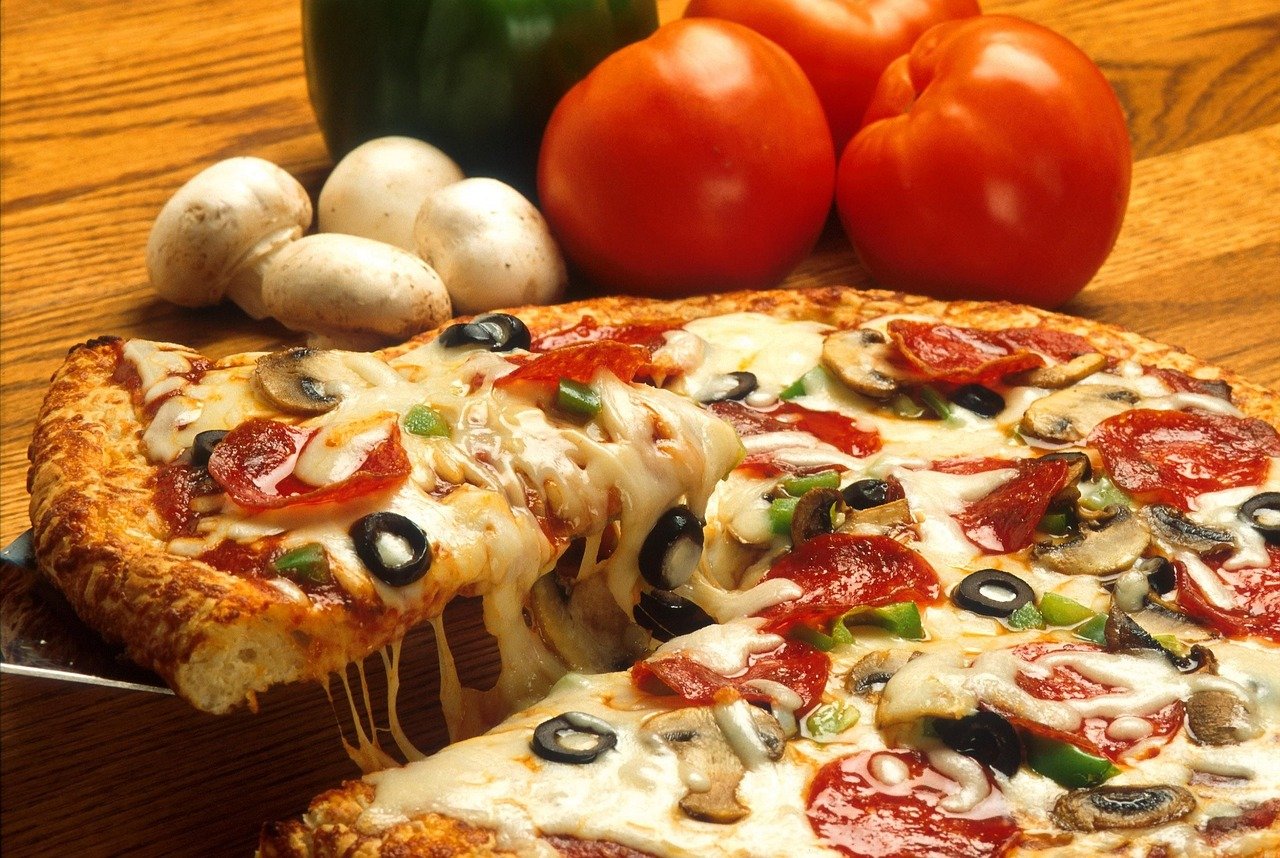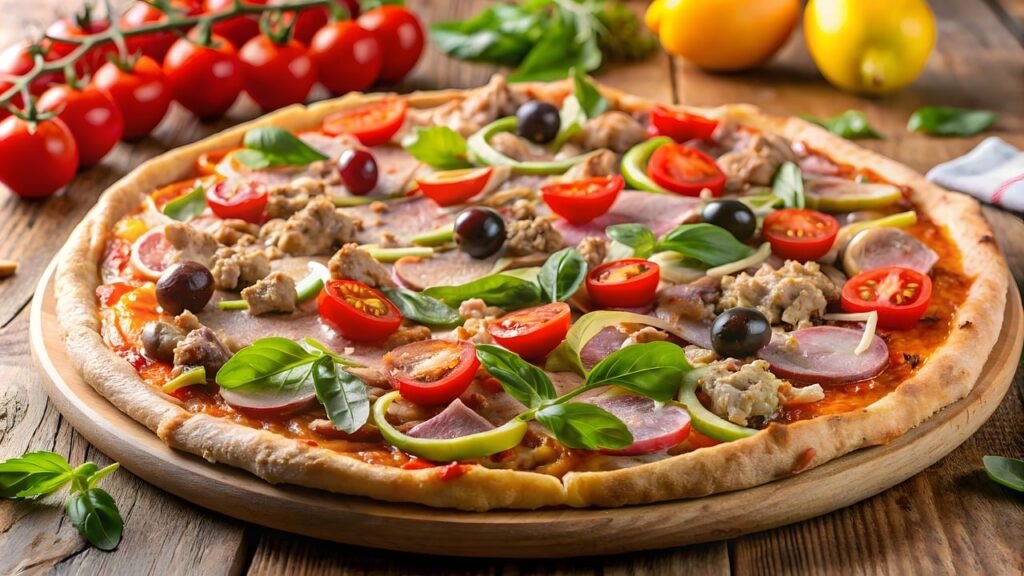Lifestyle
The Pizza Edition: A Delicious Journey Through History, Trends, and Innovations

Introduction
Pizza, a universally beloved dish, transcends cultures and generations, making it one of the most popular foods worldwide. “The Pizza Edition” dives deep into the rich history, evolving trends, and innovative twists that have shaped pizza into the culinary icon it is today. From its humble beginnings in Italy to its global dominance, this edition is your ultimate guide to everything pizza.
The Origins of Pizza
The story of pizza begins in ancient civilizations. Flatbreads with toppings have been a part of human cuisine for centuries, but it wasn’t until the 18th century in Naples, Italy, that modern pizza emerged. Initially, pizza was a peasant dish, topped with simple ingredients like tomatoes, cheese, and basil. The classic Margherita pizza, named after Queen Margherita of Savoy, symbolizes this tradition with its red, white, and green toppings representing the Italian flag.
Pizza’s Journey to Global Fame
Pizza’s journey to global fame began in the late 19th and early 20th centuries with Italian immigrants bringing their culinary traditions to the United States. The first pizzeria in America, Lombardi’s, opened in New York City in 1905. From there, pizza’s popularity soared, evolving into various regional styles, such as New York-style, Chicago deep-dish, and California gourmet pizzas.
Regional Varieties and Innovations
New York-Style Pizza
Characterized by its thin, crispy crust, New York-style pizza is typically sold in large slices that can be folded in half. Its simplicity, often topped with just tomato sauce and mozzarella, highlights the quality of its ingredients and the skill of its makers.

Chicago Deep-Dish Pizza
Chicago deep-dish pizza offers a hearty alternative with its thick crust and layers of cheese, toppings, and chunky tomato sauce. Baked in a deep pan, this style of pizza is more like a pie and requires a knife and fork to eat.
Neapolitan Pizza
Neapolitan pizza, adhering to strict traditional guidelines, features a soft, chewy crust, and is cooked in a wood-fired oven at high temperatures. The Associazione Verace Pizza Napoletana (AVPN) certifies pizzerias that meet these standards, ensuring the preservation of this culinary art form.
California Pizza
California pizza is known for its creative and non-traditional toppings. Pioneered by chefs like Wolfgang Puck, this style often includes ingredients such as avocado, goat cheese, and arugula, reflecting the diverse culinary influences of the region.
The Art of Pizza Making
Making a great pizza is both an art and a science. Key elements include:
- Dough: The foundation of any pizza, the dough must be properly kneaded and fermented. Traditional Neapolitan dough, for example, uses just four ingredients: flour, water, salt, and yeast.
- Sauce: Typically made from San Marzano tomatoes, the sauce should complement the toppings without overpowering them.
- Cheese: Mozzarella is the most common cheese used, but other varieties like provolone, ricotta, and parmesan can add unique flavors.
- Toppings: The possibilities are endless, from classic pepperoni and mushrooms to gourmet combinations like fig and prosciutto.
- Cooking Method: The cooking method significantly affects the final product. Wood-fired ovens provide a distinctive char and flavor, while modern electric ovens offer consistent heat for even cooking.
Pizza Trends and Innovations
Plant-Based Pizzas
As the demand for plant-based diets grows, pizzerias are responding with creative vegan options. Plant-based cheeses and meats, along with a variety of vegetables, provide delicious alternatives without sacrificing flavor or texture.
Gluten-Free Options
With increasing awareness of gluten intolerance and celiac disease, many pizzerias now offer gluten-free crusts. These alternatives, often made from rice flour, almond flour, or cauliflower, allow everyone to enjoy pizza without health concerns.
Artisan and Gourmet Pizzas
Artisan and gourmet pizzas have seen a rise in popularity, emphasizing high-quality, locally sourced ingredients. Chefs experiment with unique flavor combinations, such as pear and gorgonzola or truffle oil and wild mushrooms, elevating pizza to a fine dining experience.
Pizza Vending Machines
Innovation in technology has brought about pizza vending machines, which prepare and bake pizzas on demand. These machines, found in various cities worldwide, offer a quick and convenient way to enjoy fresh pizza any time of day.
Pizza in Pop Culture
Pizza’s influence extends beyond the kitchen into pop culture. From the Teenage Mutant Ninja Turtles’ love for pizza to iconic movie scenes like Julia Roberts eating pizza in “Eat Pray Love,” pizza is a symbol of comfort and enjoyment. Social media platforms are filled with pizza-related content, from recipes and cooking tips to viral pizza challenges and reviews.
The Future of Pizza
The future of pizza looks bright, with continuous innovations and adaptations to meet changing consumer preferences. Sustainability is becoming a key focus, with pizzerias sourcing ingredients responsibly and reducing waste. Technology will also play a significant role, with advancements in delivery services, ordering apps, and even AI-driven pizza customization.
Conclusion
“The Pizza Edition” offers a comprehensive look at the beloved dish that has captured the hearts and taste buds of people around the world. From its rich history and regional varieties to modern trends and future innovations, pizza continues to evolve while remaining a staple of comfort food. Whether you prefer a classic Margherita, a hearty Chicago deep-dish, or a gourmet California pizza, there’s no denying the universal appeal of this versatile and delicious creation.
By exploring the various facets of pizza, we can appreciate not only its culinary significance but also its cultural impact. So next time you enjoy a slice, remember that you are part of a global tradition that spans centuries and continents. Welcome to “The Pizza Edition,” your ultimate guide to the ever-evolving world of pizza.
Crafting the Perfect Pizza at Home
For those who want to try their hand at making pizza at home, here are some tips to help you craft the perfect pie:
- Start with Quality Ingredients: Use high-quality flour, fresh yeast, and ripe tomatoes. The better the ingredients, the better the pizza.
- Master the Dough: Kneading the dough correctly and allowing it to ferment can make a significant difference. Practice makes perfect, so don’t be discouraged by early attempts.
- Balance Your Toppings: Less is often more when it comes to toppings. Too many can make the pizza soggy and overwhelming.
- Invest in a Pizza Stone or Steel: These tools can help replicate the high heat of a professional oven, resulting in a better crust.
- Experiment with Flavors: Don’t be afraid to try new combinations and techniques. Pizza is incredibly versatile and forgiving.
- Cook at High Heat: Whether using a conventional oven or a wood-fired one, high heat is crucial for achieving the perfect texture and flavor.
By following these tips, you can enjoy the satisfaction of creating a delicious pizza in your own kitchen, tailored to your tastes and preferences.
Conclusion
In this “Pizza Edition,” we have explored the fascinating world of pizza, from its historical roots and regional varieties to modern innovations and trends. Pizza’s ability to adapt and evolve while maintaining its core appeal is a testament to its enduring popularity. As we look to the future, pizza will undoubtedly continue to be a beloved staple, bringing joy and comfort to people everywhere. So whether you’re a pizza purist or an adventurous foodie, there’s a slice out there for everyone. Enjoy your journey through “The Pizza Edition,” and may it inspire you to explore new flavors and experiences in the world of pizza.
